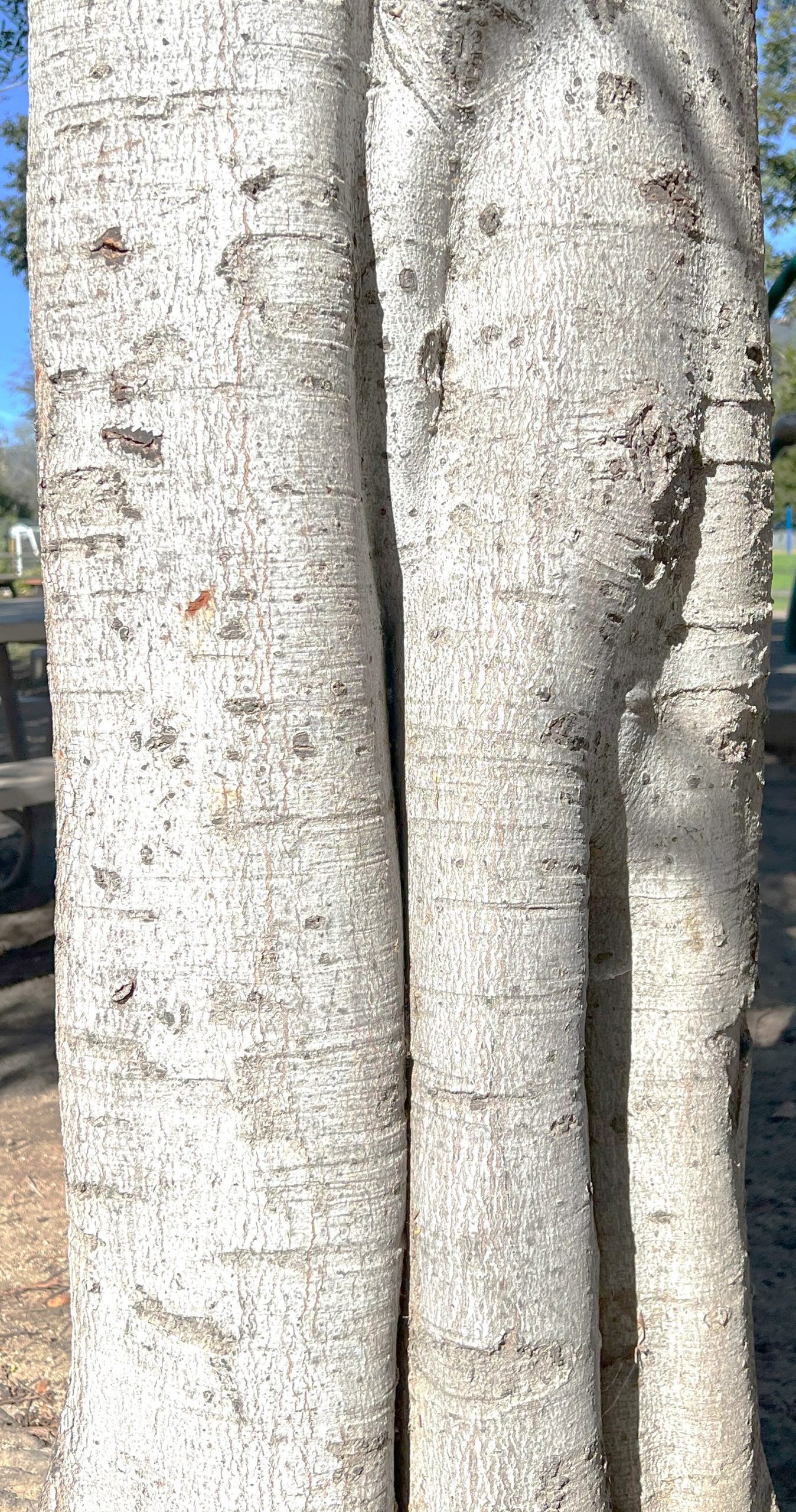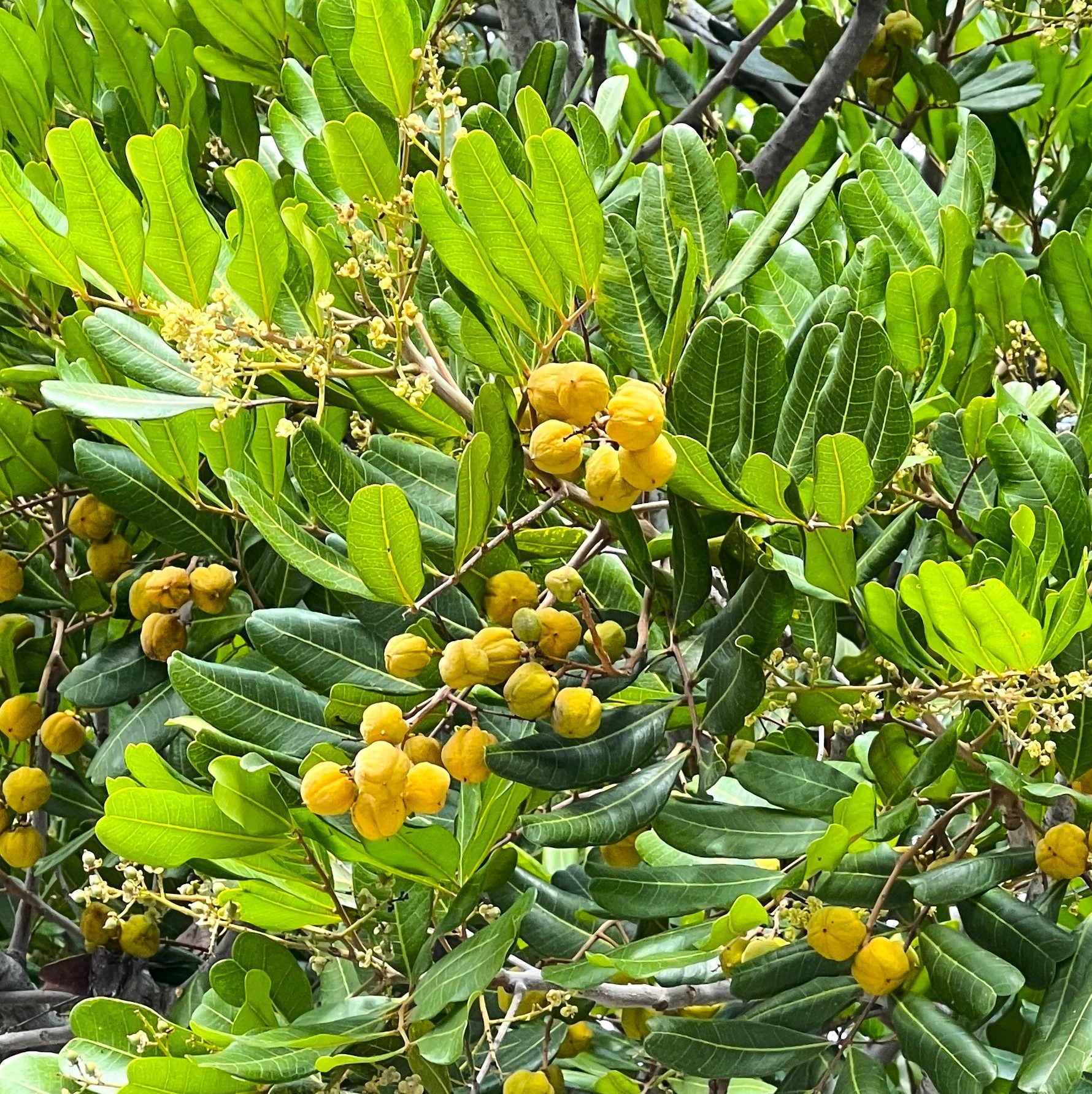Cupaniopsis Anacardioides
The Carrotwood Tree is a small- to medium-sized broadleaved evergreen tree that has been used for street and park plantings around the world. It was imported into Santa Barbara in the late 1800s but, oddly enough, is still relatively unfamiliar to many local people.
Carrotwood naturally grows as a multiple-trunked tree with long upright stems and an open form. If carefully pruned when young, it can easily be trained into a single-trunked tree. As it matures, it can grow to a height of up to 35 feet with a spread of 30 feet – although it can get even larger in ideal growing conditions.
As an ornamental tree, its primary appeal is its attractive foliage. Year round, its dense rounded crown is covered with glossy dark green leaves.
The leaves are 12-inches long, pinnately compound (feather-like), and carry 2 to 6 pairs of leaflets, each of which are 2- to 5-inches long and 1- to 3-inches wide. The leathery leaflets are obovate to elliptical in shape, strongly veined, have a prominent yellow-green midvein that protrudes underneath, and have smooth edges that curl under.
In December through February, greenish to creamy white flowers, lightly fragrant, emerge on dangling panicles (3- to 14-inches long) at or near the ends of branches. The flowers are tiny (1/8-inch across) and usually inconspicuous; however, sometimes they occur in such great numbers that they are a delightful display within the canopy.
After pollination, the flowers produce round seed pods, which are larger (about 1-inch in diameter) and more distinctive than the flowers themselves. The bright orange seed pods are divided into 3 lobes; each lobe contains a black seed (½ inch long), which is covered with a thin reddish orange skin that later turns black. In April to June, the seed pods mature and open to expose the seeds.
The bark is smooth and light gray in color. As the tree matures, the trunk frequently develops vertically raised and grooved segments – creating an extraordinary sculptural look.
The Carrotwood Tree is endemic to eastern and northern Australia – primarily the coastal forests of New South Wales to Queensland – where it grows in mostly sandy soils.
Locally, it is known by the common name of “Carrotwood”, referring to its remarkably bright orange wood. In Australia, its many common names include “Tuckeroo”, “Cashew-Leaf Cupania”, “Beach Tamarind”, and “Green-Leaved Tamarind”. Its botanical name is Cupaniopsis anacardioides. The genus name, Cupaniopsis, honors the Sicilian monk and botanical author Francesco Cupani (1657-1710). The specific epithet, anacardioides, means it resembles plants in the family Anacardiaceae (Cashew), even though it is actually in the plant family Sapindaceae (Soapberry).
Carrotwood is easy to grow and does well in our Mediterranean climate. While it prefers a sandy loam soil, it will tolerate most soil types as long as they are well-drained. Once established, it is quite drought hardy – but, of course, will look better with additional water during the dry season and during extreme droughts. It is also hardy to sea and wind exposure. It prefers full sun – but will grow in partial shade if given at least 6 hours of sun daily.
It has no serious insect or disease problems, provided it has good drainage. It is generally a low maintenance tree but, since the wood can be somewhat brittle, it will benefit from occasional pruning to shorten long fast-growing branches to maintain its rounded crown and symmetry, and to remove dead branches. It can be propagated easily from fresh seed that has been soaked in water for several days. Seeds that are lightly covered with planting mix and kept moist should germinate in 2 to 4 weeks.
The Carrotwood has so many attributes that make it an exceptional tree for use in our community. It is particularly well suited as an ornamental specimen for small private gardens and is a hardy tree for commercial landscapes, public parks. and streets.
Mature Carrotwood Trees can be seen around town in several locations: as street trees on the 400-600 blocks of Laguna Street; on the 700 block of Meigs Road; on the 1800 block of La Coronilla Drive; on the northwest corner of Anapamu Street and Garden Street; on Juanita Avenue; on Margo Street; on Vales Street; and, at 2973 State Street.


Tree-of-the-Month articles are sponsored by Santa Barbara Beautiful, whose many missions include the increase of public awareness and appreciation of Santa Barbara’s many outstanding trees and, in a long-time partnership with the City Parks & Recreation Department, the funding and planting of trees along the City’s streets.
Those who wish to honor a special someone can do so with an attractive commemorative marker that will be installed at the base of an existing street tree in the City of Santa Barbara. Because Santa Barbara Beautiful has participated in the planting to date of over 13,000 street trees, there are plenty of trees from which to choose! Application forms are available on the Santa Barbara Beautiful website, www.sbbeautiful.org.
Article and Photos by David Gress















